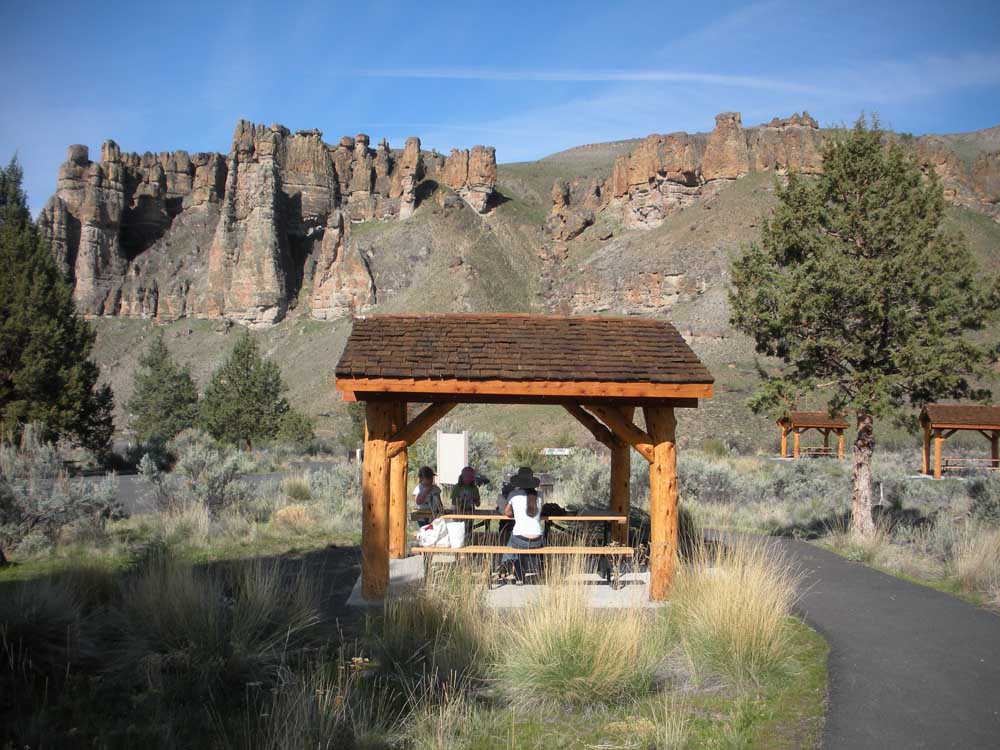John Day Fossil Beds bring in millions
Published 12:00 am Thursday, March 13, 2014

- The Bulletin file photoJohn Day Fossil Beds National Monument, 18 miles west of Fossil, contributes more than $6 million to the economy of neighboring towns, according to a report by the National Park Service and the U.S. Geological Survey.
John Day Fossil Beds National Monument draws about 150,000 visitors a year, leading to the injection of close to $6.5 million into the economy of nearby towns.
These details are among the data in a recently released report by the National Park Service and the U.S. Geological Survey. A pair of economists with the agencies studied numbers collected in 2012 and found that throughout the country visitors to national park sites numbered more than 283 million and they spent a combined $14.7 billion in towns within 60 miles of the sites.
The spending supported about 243,000 jobs around the country, according to the annual report. Those jobs include work in restaurants and grocery shops, hotels and other lodging, and recreation and amusement.
The money coming into towns around the Fossil Beds supports 88 jobs.
“It is significant, the impact that John Day Fossil Beds National Monument has on the economics of Eastern Oregon …” Shelley Hall, superintendent at the Fossil Beds said Wednesday. She said the towns receiving an economic boost from the Fossil Beds include Dayville, Mitchell and Fossil.
The National Park Service maintains four other prominent sites entirely or partially in Oregon besides the Fossil Beds, including Crater Lake National Park, the only national park in the state. Crater Lake brings in the most visitors, leading to the largest infusion of cash and biggest job support.
The park drew nearly 450,000 visitors in 2012, according to the report. Those visitors spent more than $36 million in towns within 60 miles of the park, such as Klamath Falls, providing 551 jobs.
The John Day Fossil Beds are behind Lewis and Clark National Historic Park but ahead of the Oregon Caves National Monument in terms of the number of visitors and economic impact. Lewis and Clark had more than 201,000 visitors in 2012, according to the report, putting more than $10.8 million into the economies of nearby towns and supporting 153 jobs. The park is near Astoria and includes locations on the Columbia River and Oregon Coast.
Oregon Caves saw more than 78,000 visitors in 2012, according to the report, who spent more than $5 million in nearby towns, supporting 74 jobs. The caves are near Cave Junction in Southern Oregon.
Closer to Bend, Newberry National Volcanic Monument may have a name similar to the Park Service sites but is overseen by the U.S. Forest Service. The monument had more than 190,000 visitors last year, according to Jean Nelson-Dean, spokeswoman for the Deschutes National Forest. She didn’t have economic impact data available for Newberry but said it probably is similar to what the Park Service found for its sites.
Newberry includes the resorts and campgrounds at Paulina and East lakes in the Newberry Crater, Lava Lands Visitor Center and Lava River Cave.
“(The Volcanic National Monument) is extremely popular,” she said.
The results of the Park Service report are in line with a study for the agency by researchers at Michigan State based on 2011 data released last year.
Since it is based on 2012 data, the latest report doesn’t take into account the effect of the 16-day federal shutdown last October.
While Hall, the Fossil Beds superintendent, didn’t have economic figures for the shutdown, she did have visitors numbers. The Fossil Beds, as other Park Service sites around the country, were closed during the shutdown.
Although the Fossil Beds saw a drop in visitors because of the shutdown — from more than 9,100 visitors in October 2012 to more than 5,800 last October — the overall count for 2013, 156,000, was more than 5 percent higher compared with 2012.
— Reporter: 541-617-7812, ddarling@bendbulletin.com






